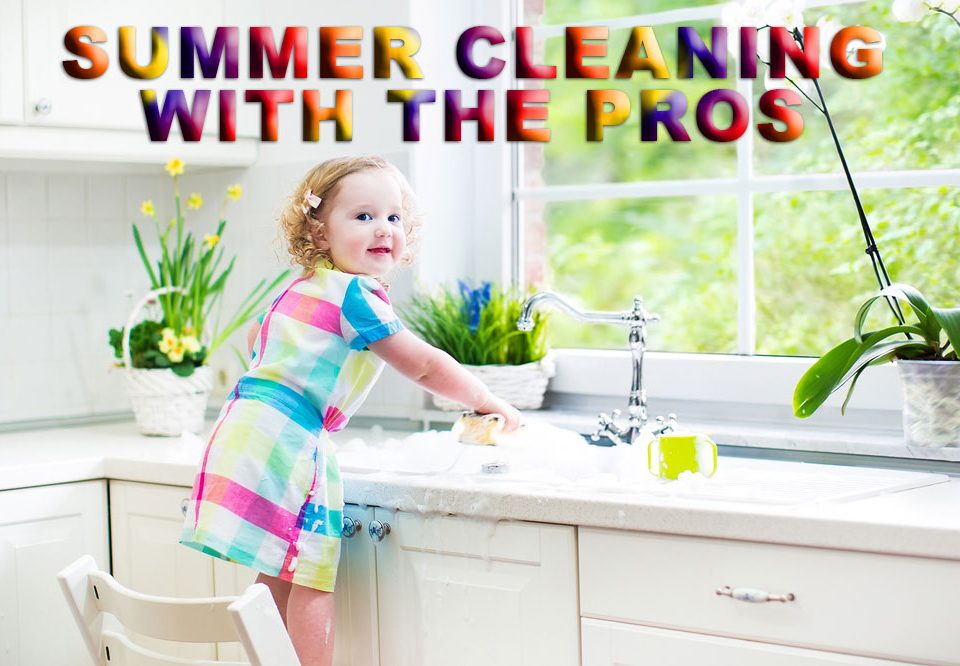- Give Us A Call!
- (360) 448-2271
Spring Cleaning With The Pros

Wall To Wall Cleaning With Kids (The Struggle Is Real)
March 4, 2019
Nothing To Sneeze About! How To Survive The Pollen Season
May 6, 2019While the official start to spring is still weeks away, it’s never too soon to start planning your spring-cleaning gambit—especially for those big jobs that might require booking professional services or renting specialized equipment. By the time that throw-open-your-windows-and-doors weather finally hits, you’ll be way ahead of the game.
Spring Cleaning Checklist
Closets/drawers/basement/attic/garage storage areas. This one comes first on the list, because you can get started with purging and organizing your stuff long before the weather turns nice, which lays a nice groundwork for all the heavy-duty cleaning to come. For inspiration, check out Marie Kondo’s smash Netflix hit Tidying Up. Add efficiency by pre-gathering suitable containers for carting away no-longer needed or wanted items, plus a list of local organizations that accept donations—or, even better, ones that will come and pick your donations up.
Curtains/drapes/blinds. Some curtains can go right into the washing machine, but many will require professional dry cleaning. For washable types, you’ll want a detergent formulated specifically for delicate fabrics and/or to guard against color fading. For vinyl blinds, especially if you don’t wipe or vacuum them regularly, be prepared to take them down for a good soak and scrub either in the tub or using a wide, shallow basin outside.
Carpets/rugs. Here is why to deep clean carpets and rugs at least once every 12 to 18 months. And spring is the perfect time for steam- or dry-machine cleaning, which can be done either by a professional service or with rented equipment. Either way, book your slots early to beat the spring-cleaning rush.
Mattresses. Here are some unfortunate truths about mattresses, but in short, they should be flipped, rotated, and vacuumed thoroughly with an upholstery attachment at least twice a year. If you’re able, spring is also a great time to move mattresses outside for a few hours of fresh air and bright sunshine to kill off any dust mites that might have taken up residency.
Heavy bed linens. Wool blankets need professional dry cleaning, but virtually everything else can go right into the wash with a mild detergent. Note that down and other heavy comforters and quilts need front-loading machines and dryers with extra-large capacities (think, laundromat) both to ensure cleanliness and to avoid damaging the filling. Avoid using fabric softeners with down, and use dryer or tennis balls to restore maximum fluffiness.
Pillows. It’s best to wash bed pillows at least once every six months. For regularly-maintained pillows, a regular daily detergent should do the trick; for heavier soils, add a detergent booster such as OxiClean or Borax. Never use bleach or fabric softeners, which will damage the filling. Use dryer or tennis balls for fluffing.
Furniture upholstery. While regular vacuuming is best for preserving upholstered furniture, deep cleaning at least once a year is recommended. How you clean depends entirely on the material, and most sofas and chairs will be clearly labeled (usually under the cushions) with cleaning instructions. For fabrics that can withstand a little moisture, steam cleaning—often with the same machine you rent for cleaning carpets—is one great option. Sprinkling with baking soda or even a bit of rug cleaner then vacuuming after 30 or so minutes is an effective, dry alternative.
Bathroom. Check out this earlier post on how to tackle spring cleaning for bathrooms, and this one for tips on keeping things tidy under the sink. A few other things to address specifically include: de-clogging slow drains; cleaning steam exhaust fans; washing or replacing mildewed shower curtains and liners; and addressing any hard soap scum buildup on shower doors and walls.
Windows/screens. Easily one of the most time-consuming and labor-intensive cleaning jobs of spring, you will be happy you washed your windows and screens come May and June when everything’s in glorious bloom. What’s more, with the right set of tools—a low suds-ing soap; soft sponge; squeegee; and plenty of absorbent, lint-free cloths for the panes (NOT glass cleaner and paper towels); and a vacuum or garden hose for the screens—you can have a sparkling, clear view of spring’s blooming magic with less effort than you might think.
Air ducts/vents/chimneys/flues. After winter’s heavy use, spring is the perfect time to have air ducts, chimneys, and flues professionally cleaned and inspected so they will be safe and ready to use again come fall and winter.
Walls. Along with windows and screens, there’s virtually no way to get your walls washed well without some serious time and labor (unless, of course, you hire a professional service to do it for you). To determine if major wall washing is needed, remove a picture, clock, or other hanging item. If there’s a notable difference in color between exposed and non-exposed areas, it’s time for a wash. This post has tips for cleaning different types of wall coatings. In general, you’ll need a small step ladder (so you can start high and work down); a bucket with a solution of water and a pH-balanced cleaner; plus loads of clean, absorbent clothes for catching drips.
Floors. The floors in your home bear the biggest burdens of both winter (wet, salt, and grit) and early spring (mud). You last BIG task of the Spring Cleaning season should be to deep clean your floors, plus any needed stripping, waxing, and re-sealing (definitely do floors after walls). For tools needed by major floor type, check out this post.
If heavy duty Spring Cleaning just isn’t your thing, call ProCare Clean today to see what big tasks our local cleaning crews might be able to take off your hands.




